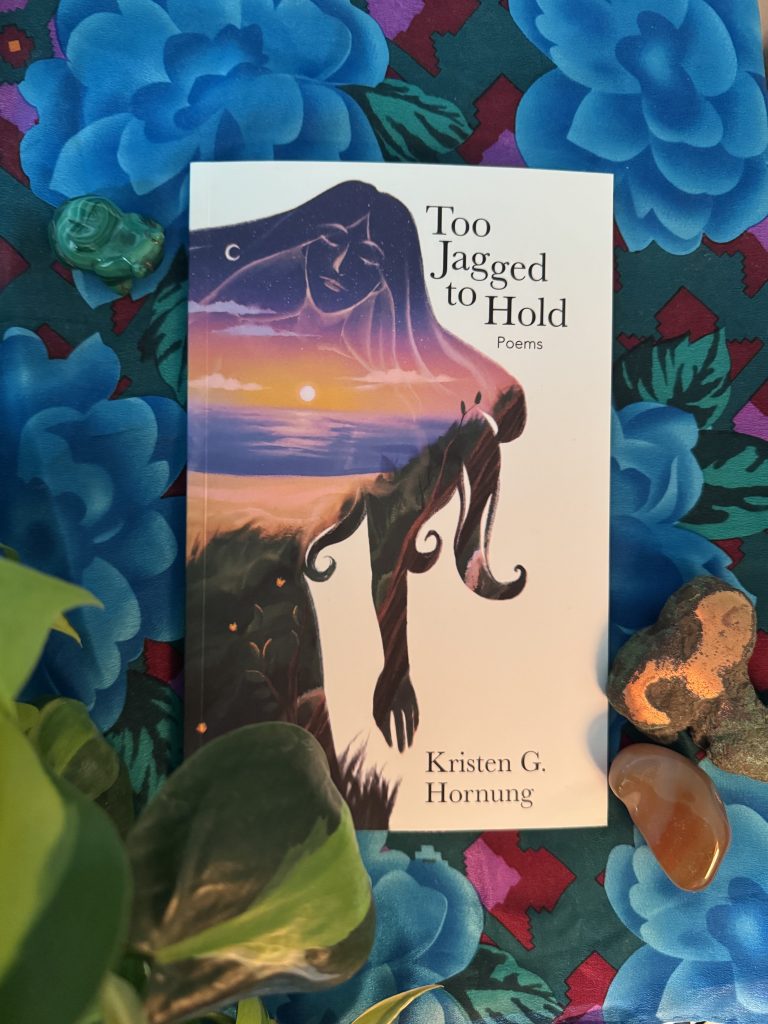Therapist & Writer: How Creative Expression informs my therapy practice

My professional life manifests in different roles: the clinician and the writer. I typically keep these roles separate to maintain clarity and uphold the therapeutic frame, but I am also exploring ways in which my role as a writer might benefit my clients (for example, integrating more creative expression activities into therapy for clients who are interested).
This website is dedicated solely to my psychotherapy practice. If you are a current or prospective therapy client, everything you need to know about my approach, specialties, and services is here.
For those seeking my writing, including my poetry collection Too Jagged to Hold, my creative work lives on its own website: kghornung.com.
About Too Jagged to Hold
Too Jagged to Hold is a poetry collection inspired by my personal experiences of long-term trauma recovery. While the book is not a clinical work, the imagery and emotional landscapes reflect the same depth and symbolic sensibility. The material may be activating for some readers.
Some people discover my therapy practice after encountering my poetry; others appreciate knowing the person they work with is also someone who engages in creative meaning-making. Both are welcome, and the spaces remain intentionally distinct.
Maintaining these boundaries honors the integrity of the therapeutic work, while allowing the creative work to stand in its own.
Creative Expression Within Therapy
Creative expression can be a meaningful part of therapeutic work for clients who find it helpful.
In therapy, this can look like:
- Exploring your inner world through metaphor, imagery, and symbolic language
- Using journaling, dreams, or free-writing to access deeper layers of experience
- Bringing your art to session (i.e. share your creations, including music, drawings, writing, etc. in therapy)
- Processing the important psychological material that arises through art, stories, fantasies, dreams, or other forms of intuitive expression
- Allowing creative approaches to support healing, the development of insight, and integration
This is not an expressive-arts therapy practice in the formal sense, and no one is ever expected to write or create. Instead, creative expression is welcomed as one possible pathway into meaning-making and self-understanding.
Clients who are drawn to creativity, or who feel that metaphor, imagination, and symbolic thinking help them make sense of their inner landscape, may appreciate this approach.
